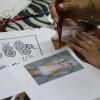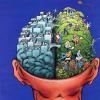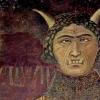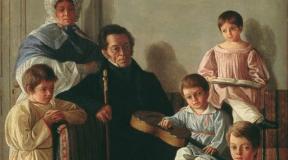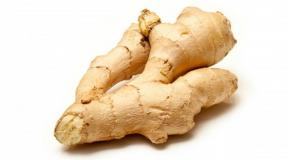History of special and auxiliary disciplines. History as a science. Auxiliary historical disciplines. Types of historical sources. Domestic historiography: ambiguity of the concept, stages of development
Auxiliary historical disciplines are subjects that study certain types or individual forms and contents of historical sources.
We can refer the following sciences to auxiliary historical disciplines:
Heraldry- special historical discipline, engaged in the study coats of arms, as well as the tradition and practice of their use. It is part of emblematics - a group of interrelated disciplines that study emblems. The difference between emblems and other emblems is that their structure, use and legal status correspond to special, historically established rules. Heraldry precisely determines what and how can be applied to the state coat of arms, family coat of arms, and so on, explains the meaning of certain figures.
Sphragistics- an auxiliary historical discipline that studies seals (matrices) and their impressions on various materials.
Initially developed as a part of diplomacy, dealing with the determination of the authenticity of documents.
Historical metrology- an auxiliary historical discipline that studies the measures used in the past - length, area, volume, weight - in their historical development. Often, units of measurement did not form a metric system, they are referred to as traditional systems of measurement. Historical metrology studies the history of the genesis and development of various measurement systems, the names of individual measures, their quantitative ratios, establishes their real values, that is, correspondence to modern metric systems. Metrology is closely related to numismatics, since many peoples in the past had weights that coincided with monetary units and had the same name.
Numismatics- auxiliary historical discipline that studies history coinage and money circulation.
Public functions of numismatics: identification of numismatic cultural monuments; the study of characteristic facts, connections and processes that contribute to a deeper understanding of history and fill in the gaps in historical science.
Chronology- auxiliary historical discipline, establishing dates of historical events and documents; sequence of historical events in time; a list of any events in their time sequence.
Historical geography- an auxiliary historical discipline that studies history through the "prism" of geography; it is also the geography of a territory at a certain historical stage of its development. At the moment, 8 sectors of historical geography are distinguished:
Historical physical geography (historical geography) - the most conservative branch, studies landscape changes;
Historical political geography - studies changes in the political map, political system, routes of conquests;
Historical geography of the population - studies the ethnographic and geographical features of the distribution of the population in the territories;
Historical social geography - studies the relationship of society, the change of social strata;
Historical cultural geography - studies spiritual and material culture;
The historical geography of the interaction between society and nature - direct (human influence on nature) and reverse (nature on human);
historical economic geography - studies the development of production, industrial revolutions;
Historical and geographical regional studies.
Archiving- a scientific discipline that studies and develops theoretical, methodological and organizational issues of archiving and its history.
Archeology- a historical discipline that studies the historical past of mankind from material sources.
Ethnography- a part of historical science that studies ethnic peoples and other ethnic formations, their origin (ethnogenesis), composition, settlement, cultural and everyday features, as well as their material and spiritual culture.
Historiography is an auxiliary historical discipline that studies the history of historical science. Historiography tests how correctly the scientific method is applied in writing a historical work, focusing on the author, his sources, the separation of facts from interpretation, as well as style, author's biases and the audience for which he wrote this work in the field of history.
Historical computer science- an auxiliary historical discipline that studies the methodology of using information technology in the study of the historical process, the publication of historical research and the teaching of historical disciplines, as well as in archival and museum work.
AUXILIARY HISTORICAL DISCIPLINES, special historical disciplines, in Russian science, the collective name for a number of scientific disciplines of the source cycle, studying certain types of historical sources and their external signs. The purpose of auxiliary historical disciplines is to extract maximum information about the origin of a historical source and establish the degree of legitimacy of its use in scientific research. The scientific apparatus of auxiliary historical disciplines is special methods and techniques that make it possible to establish the time, place, conditions for the creation of historical sources, to determine their authorship and authenticity. The subject of study of each of the disciplines and the theoretical questions being developed are determined by the type (written source, coin, coat of arms, seal, etc.) and type (chronicle, act, epistolary, memoirs, chronicle, etc.) of the source, as well as the material of the source containing written information (birch bark, parchment, paper, stone, bone, metal, wood).
The use of techniques that form the methodological basis of auxiliary historical disciplines was originally of a practical nature. The chroniclers, setting out events in chronological order, unwittingly developed the techniques of chronology. In order to establish the authenticity of documents in contentious court cases, ancient scribes analyzed the act form, compared handwriting, studied the inscriptions on seals and methods of attaching them to documents. The clergy calculated the dates of Paschal. Domestic needs and the need for fiscal taxation contributed to the development of metrological units.
Gradually, practical knowledge acquired a more systematic character. In the 16th and 17th centuries, the development of "practical" paleography was expressed in the compilation of teaching aids (alphabet-copybooks, manuals for scribes, draftsmen, primers), in the practice of forensic examination. Knowledge of metrology formed the basis of reference books that reflected various metrological units (“Trading Book”, 1570s; “Counting Wisdom”, 1st third of the 17th century). The development of genealogy met the needs of the state authorities and the nobility: genealogical books were compiled (from the 1540s), "The Sovereign Genealogy" (in the 1550s). In 1672, by decree of Tsar Alexei Mikhailovich, the “Big State Book or the Root of Russian Sovereigns” (abbreviated as “Titulary”) was compiled, which can be considered the pinnacle of the integrated use of practical knowledge in the field of paleography, genealogy, heraldry, sphragistics, historical chronology, onomastics.
Since the 18th century, the formation of auxiliary historical disciplines began. This, in particular, was facilitated by the decrees of Peter I on sending ancient letters and books from monasteries and churches to the Synod, the creation of the King of Arms office under the Senate (1722) and the St. Petersburg Academy of Sciences (1725), the emergence of large museum collections (collections of the Kunstkamera and the Hermitage). Sources of various nature were accumulated, and the development of methods for their study began. Scientists V. N. Tatishchev, G. F. Miller, V. V. Krestinin, N. I. Novikov, N. N. Bantysh-Kamensky, Count A. I. Musin-Pushkin and others began to study and publish sources of diplomacy, genealogy, numismatics, historical geography.
In the first half of the 19th century, auxiliary historical disciplines developed mainly as descriptive ones, however, in the works of researchers, attempts were already made to scientifically comprehend, generalize, classify and systematize factual material. For the first time in Russian historiography, A. N. Olenin spoke about auxiliary historical disciplines in general, using the expression “auxiliary information” (“Experience of a new bibliographic order for the St. Petersburg Imperial Library”, 1809). The terms “auxiliary sciences”, “auxiliary knowledge” of historical science were used in the creation of library and bibliographic classifications by H. A. Schlozer (1823), K. K. Voigt (1834), V. G. Anastasevich (1828), V. I. Mezhov (1869) and others. The activities of Metropolitan Evgeny (Bolkhovitinov), K. F. Kalaidovich, P. M. Stroev and archeographic expeditions contributed to the further identification and collection of historical sources. In the 19th and early 20th centuries, archeographic commissions made a great contribution to the publication of historical sources. An important role in the development of auxiliary historical disciplines was played by the works of A. Kh. Vostokov, P. I. Ivanov, I. P. Laptev on paleography, P. V. Khavsky on chronology, Ts. A. B. Lakiera - in heraldry and sphragistics. With the scientific study of sources and the development of historical science as a whole, a desire arose to isolate each discipline, determine the subject of its study and goals, improve methodological techniques, and move away from descriptiveness. Thus, the study of external features of handwritten sources moved to the field of paleography, and the study of inscriptions on stone, metal seals and coins became the subject of study of glyptics, epigraphy, sphragistics, and numismatics.
In the 2nd half of the 19th - early 20th century, books, articles, reference books in the field of paleography were published (authors - E.F. Karsky, F.F. Brandt, N.M. Karinsky, A.I. Sobolevsky, I.A. Shlyapkin, N. P. Likhachev, V. N. Shchepkin), historical chronologies (D. I. Prozorovsky, N. V. Stepanov, D. M. Perevoshchikov, N. I. Cherukhin), sphragistics (N. P. Likhachev ), genealogy (Prince P.V. Dolgorukov, V.V. Rummel and V.V. Golubtsov, Prince A.B. Lobanov-Rostovsky, L.M. Savelov, G.A. Vlasyev), heraldry (V.K. Lukomsky, V. L. Modzalevsky, P. P. von Winkler, Baron N. A. Tipolt), numismatics (Count I. I. Tolstoy, A. V. Oreshnikov, A. K. Markov). The teaching of auxiliary historical disciplines was started at the St. Petersburg Archaeological Institute, and then at the Moscow Archaeological Institute. The result of the theoretical and methodological understanding of auxiliary historical disciplines as a set of sciences at the end of the 19th century was summed up by V. S. Ikonnikov (“The Experience of Russian Historiography”, vol. 1, books 1-2, 1891-92). Auxiliary historical disciplines in Russia developed at this stage in close connection with Western European science. New disciplines emerged: archeography, archiving, historical bibliography, document science, historical demography, historical cartography, iconography, medallions, textology, uniformology, philately, philocarty, heuristics, epistolography. At the same time, the subject and tasks of some sciences remained unclear: sphragistics was considered as an applied discipline in relation to diplomacy; heraldry - to genealogy; chronology - to paleography. Archeology occupied a special place in the system of the humanities, since this concept included both the science of antiquities (for example, Slavic, Eastern, ancient) in the broad sense, and most of the auxiliary historical disciplines (except for historical geography, genealogy and some others).
In the 1920s and 1930s, there was a crisis in the USSR in the study of many auxiliary historical disciplines, in particular genealogy, heraldry, etc., which were considered "noble" sciences. At the same time, in 1930, the Moscow State Historical and Archival Institute was established (until 1932 - the Institute of Archival Studies; since 1991 - the Historical and Archival Institute as part of the Russian State University for the Humanities), in which the Department of Source Studies and Auxiliary Historical Disciplines was established in 1939.
Interest in the auxiliary historical disciplines began to grow again from the mid-1940s. Facsimile editions of a number of handwritten texts were made, new sources were involved in scientific circulation, including birch bark letters, seals, coins discovered during archaeological excavations. In the works of M. N. Tikhomirov, A. V. Artsikhovsky, B. A. Rybakov, L. V. Cherepnin, I. G. Spassky, N. V. Ustyugov, V. A. Nikonov, N. A. Soboleva, S. M. Kashtanova, S. A. Klepikova, G. A. Leontyeva, P. A. Shorina, V. B. Kobrin and others have developed a historical approach, comprehension, improvement and deepening of methodological techniques and theoretical development of individual auxiliary historical disciplines. They began to study in more detail: in paleography - cursive writing of the 17-18th century, book writing, miniature, paper brands and stamps, in metrology - the measures and metrological policy of the Russian government in the 18-19th centuries, in heraldry - city and noble coats of arms; in the chronology, simpler formulas for calculating and checking dates were derived. The objects of study of auxiliary historical disciplines became more diverse (for example, in sphragistics - seals preserved in isolation from documents), traditional sources were studied in a new way (in numismatics - coin treasures as a complex numismatic source, in heraldry - coat of arms as a source that reveals the fate of the owners) .
In the 1960-80s, the methods and techniques of auxiliary historical disciplines were improved. Through the efforts of numismatists, a technique for stamp analysis of coins has been developed. In the field of chronology, knowledge of dendrochronology, phenology, ornithology began to be applied, helping to establish indirect dating; in sphragistics - methodological methods of working with ancient Russian seals, based on the exhaustive involvement of sphragistic material. On the basis of traditional historical disciplines, new ones appeared: codicology, associated with the study of handwritten books, ascertaining the composition of scribes and ways of distributing books from their centers of correspondence to modern book depositories. Since 1968, the collection Auxiliary Historical Disciplines (vols. 1-29-) has been published in Leningrad (now St. Petersburg).
The chronological framework of auxiliary historical disciplines is expanding, their traditional source study functional tasks; the conclusions began to be used to solve problems in the field of socio-economic, political and cultural history. Paleographic observations on the evolution of letter graphics and the study of writing material help in solving the problem of the level of development of writing and literacy. The seals preserved separately from the documents make it possible to restore the history of the state institutions of the Old Russian state. Coin hoards are used to characterize economic ties, genealogy and heraldry help to supplement conclusions about political and cultural ties. Onomastics provides an opportunity for a more in-depth study of demographic processes, and metrology - an understanding of the severity of fiscal taxation, the amount of work and the amount of its payment.
There is an opinion about the separation of birch bark from paleography (studies birch bark letters) and filigranology (studies the signs of paper), from heraldry - vexillology, from numismatics - phaleristics (studies badges) and bonistics. Several variants of the classification of auxiliary historical disciplines have been developed, none of which is generally accepted.
Lit .: Bolshakov A. M. Auxiliary historical disciplines. 4th ed. L., 1924; Cherepnin L. V. Development of auxiliary historical disciplines for fifty years // Soviet archives. 1967. No. 5; he is. To the question of the methodology and methods of source study and auxiliary historical disciplines // Source study of national history. M., 1973. Issue. one; Pronshtein A.P. The use of auxiliary disciplines when working on historical sources. M., 1972; Kamentseva E. I. History of auxiliary historical disciplines. M., 1979; Pronshtein A.P., Kiyashko V.Ya. Auxiliary historical disciplines. M., 1979; Soboleva N. A. On the trends in the development of special historical disciplines: Historiographic review // Source study of national history. M., 1980; Shepelev L. E. Source study and auxiliary historical disciplines: On the question of their tasks and role in historical research // Auxiliary historical disciplines. L., 1982. Issue. thirteen; Actual problems of source studies and special historical disciplines. M., 1983; Pashkov A. M. Auxiliary historical disciplines in domestic archival education in the late XIX - early XX centuries. M., 1984; Auxiliary historical disciplines: historiography and theory. K., 1988; Introduction to Special Historical Disciplines. M., 1990; Special historical disciplines. St. Petersburg, 2003; Auxiliary historical disciplines. M., 2004; Leontyeva G. A., Shorin P. A., Kobrin V. B. Auxiliary historical disciplines. M., 2006.
Auxiliary (special) historical disciplines- the name of the historically established and continuing to develop the totality (system) of special scientific areas. Within the framework of these scientific directions, methods for studying written, material, and visual historical sources are being developed.
The system of auxiliary historical disciplines that has developed to date is the result of the development of domestic historical science over the course of three centuries. In response to its requests, the system of auxiliary historical disciplines also changed. The logic of the development of the system is such that the number of auxiliary historical disciplines is constantly increasing. Today, some experts number about 60 of them. To systematize auxiliary disciplines, heterogeneous features are used. One group includes disciplines, each of which studies one kind or type of historical sources. This group includes bonistics, vexillology, heraldry, diplomacy, numismatics, sphragistics, uniformology, phaleristics. Separate aspects of the sources study the disciplines of the second group: historical metrology, historical chronology, neography, (studies the history of Cyrillic writing, in terms of the charter , semi-ustav, cursive writing), toponymy, filigranology (the subject of study is filigree), etc. The third group includes disciplines that, based on several groups of sources, solve individual problems. This is genealogy, historical geography, emblematics. Another group of auxiliary historical disciplines provides a search for historical sources - archiving (studies the history and organization of archiving, the theory and practice of archives), archeography, historical bibliography.
History of the term
The name of the collection comes from the applied purpose of the directions. In the 19th century they were called "auxiliary knowledge", "auxiliary information", "auxiliary sciences of history", "auxiliary sciences for history", "auxiliary historical sciences". It is believed that for the first time the name "auxiliary knowledge" was used in 1809 by A.N. Olenin. The modern name "auxiliary historical disciplines" was introduced into scientific circulation at the turn of the 19th - 20th centuries. Since the middle of the XX century. they also came to be called "special" historical disciplines. Both terms are currently used interchangeably.
Formation of the system of auxiliary historical disciplines
The formation of a system of auxiliary historical disciplines as scientific areas was due to the development of domestic historical science. In the XVIII century. there were processes associated with the specialization of science and the formation of prerequisites for the formation of a system of scientific knowledge, characterized by special rules, procedures for criticizing historical sources, and this science was called science (of antiquities). The concept of "antiquity" included rarities, remnants of the past. In the XVIII century. an idea was formed about their cognitive function in historical research. Development of problems of national history in the works of V.N. Tatishchev, G.F. Miller, M.V. Lomonosov, M.M. Shcherbatova, A.L. Schlötsera showed the need for special information to write a historical essay. This information was accumulated in studies, publications, and reference materials. Subsequently, the received auxiliary material in the form of tables, diagrams, dictionaries, etc. was to become the property of contemporaries and future generations of research.
In the first third of the XIX century. the development of auxiliary historical disciplines was closely connected with the concept of "historical criticism". Representatives of the skeptical school, headed by Professor of Moscow University M.T. Kachenovsky. They believed that they did not carry absolutely reliable information, therefore, historical material should be subjected to strict evaluation, careful criticism and selection. Doubt about the reliability of sources was put forward by Kachenovsky and his students as a prerequisite for historical research. Critical analysis techniques were developed within the framework of auxiliary historical disciplines. N.I. Nadezhdin, I.E. Zabelin, A.S. Uvarov .
The role of scientific and scientific-public associations in the development of auxiliary historical disciplines in the second half of the 19th - early 20th centuries.
In the second half of the XIX - early XX centuries. the development of auxiliary historical disciplines was facilitated by the activities of various scientific and scientific-public associations. Among them is the Moscow Archaeological Society, which existed since 1864. Attracting significant scientific forces to solve the problems set for the society, its organizer A.S. Uvarov gave his activities an all-Russian scale. The society was engaged in the study of Russian antiquities, the preservation of "the remnants of Russian antiquity", "the destruction among the general mass of the population of indifference to these works." The Moscow Archaeological Society has taken a special place in the history of Russian archeology due to the fact that it was the organizer and coordinating center of regularly held Archaeological Congresses. From 1869 to 1911, fifteen congresses were held in different cities of the European part of Russia and the Caucasus.
In the second half of the XIX - early XX centuries. acted as specialized companies. The Russian genealogical society, which existed in St. Petersburg from 1897 to 1922, can be attributed to such societies. According to the charter, it had the goal of “scientific development of the history and genealogy of the Russian nobility ... The scope of the society also includes research on all those auxiliary branches of Russian historical sciences that are in contact with the history of the nobility, such as heraldry, sphragistics, diplomacy, etc. The identification of sources on the history of noble families, the study of their origin, the preparation of genealogical books and genealogical paintings for publication, became one of the leading directions that was developed by members of the Russian Genealogical Society.
The Moscow Numismatic Society (1888 - 1917) was a specialized society whose activity brought numismatics as an auxiliary historical discipline to a new stage of its development. The Society formed a numismatic collection and a library of specialized literature, which were completed mainly through donations.
The materials of the publications of the society allow us to see how at the turn of the 19th - 20th centuries. the subject of numismatics was understood as an auxiliary historical discipline, what were the main directions for studying coins of different times and peoples (Russian coins of the most ancient and specific period; Eastern coins; Western European coins; Polish coins of the ancient world and Byzantine). Members of the society took the first steps in a comprehensive study of Russian coins, drawing on written and pictorial sources: official records management, miniatures of the Illuminated Chronicle. Society members were interested in such methodological issues as coin classification systems; weight studies of monetary systems; description of coin treasures. The bibliographic direction was sufficiently developed, since the members of the society closely followed the modern trends in the development of numismatics abroad: they reviewed interesting works, critically evaluated methodological materials.
The Society has planned the preparation of a Numismatic Dictionary. The program of this handbook was developed and several articles were written for it. However, this work was suspended for some reason.
Contribution to the development of auxiliary historical disciplines was made by church-archaeological societies that were created at theological academies in Moscow, St. Petersburg, and Kiev.
Of the other societies that fruitfully developed the problems of auxiliary historical disciplines in the second half of the 19th - early 20th centuries, one can name the Society of Russian History and Antiquities at Moscow University (founded in 1804); Odessa Society of Lovers of History and Antiquities (founded in 1839); Society of Lovers of Natural Science, Anthropology, and Ethnography at Moscow University (founded in 1863); Moscow Society of Ancient Russian Art at the Moscow Public Museum (founded in 1864); Historical Society of Nestor the Chronicler at Kiev University (founded in 1873); Society of Lovers of Ancient Literature (founded in St. Petersburg in 1877); Historical and Philological Society at Kharkov University (founded in 1877); Society of Archeology, History and Ethnography at Kazan University (founded in 1878); Russian Bibliographic Society at Moscow University (founded at the end of the 19th century); Historical and Genealogical Society in Moscow (founded in 1904) and others.
Teaching auxiliary historical disciplines in the second half of the 19th - early 20th centuries.
The teaching of certain auxiliary disciplines began at Moscow University in the 18th century. In the first third of the XIX century. here the course "Auxiliary Historical Sciences" was read, which included genealogy, historical geography, diplomacy, heraldry, chronology and numismatics. The first university study guides in auxiliary historical disciplines prepared by master M.S. Gastev. These were "Materials for the auxiliary sciences of history" on chronology, genealogy, diplomacy (remained unpublished).
In the second half of the XIX - early XX centuries. in universities, some courses related to the auxiliary historical disciplines were taught in the form of special courses. For example, at Moscow University V.O. Klyuchevsky taught a special course on source study of written sources; at St. Petersburg University A.I. Sobolevsky - paleography course, at Novorossiysk University V.E. Krusman - “A general outline of the auxiliary sciences of history. Methodological course. Auxiliary historical disciplines were discussed in theoretical and methodological courses. For example, at Kazan University M.M. Khvostov taught the course "Methodology of History and Philosophy of History", where he gave an idea of the composition of auxiliary disciplines, determined their place in historical research.
Specialists in the field of auxiliary historical disciplines were trained in some specialized educational institutions. Thus, paleography was taught at the Konstantinovsky Land Survey Institute, founded in Moscow in 1779, at the Alexander Lyceum and the School of Law, located in St. Petersburg. However, the training of a small number of specialists in very narrow areas could not satisfy social needs. In the second half of the XIX - early XX centuries. the social demand for professionals in the field of archeology was associated with a deepening specialization in the field of science and culture.
The shortage of specialists in archaeology was filled by private universities. In Russia in the last third of the XIX - early XX century. two such universities were created: the St. Petersburg Archaeological Institute (founded in 1877) and the Moscow Archaeological Institute (founded in 1907).
Well-known scientists worked at the St. Petersburg Archaeological Institute, who provided high level teaching. N.P. Likhachev held the chair of diplomacy, he also read sphragistics. Initially, the course of paleography was taught as Slavic-Russian, and was read by A.I. Sobolevsky, but in the 1903/1904 academic year it was divided into two - the course of South Slavic paleography and the course of Russian paleography, the first course was taught by N.A. Lavrovsky, and the second - I.A. Shlyapkin. Several people - E.E. Zamyslovsky, A.S. Lappo-Danilevsky, S. M. Seredonin, A.A. Spitsyn - taught historical geography. The lecture course on Russian numismatics, “not taught anywhere from the department”, was first read in 1897 by a graduate of the institute A.K. Markov. In the course of metrology and chronology, D.I. Prozorovsky summed up his own research in these areas. Institute graduate V.K. Lukomsky prepared and taught a heraldry course, which was included in the curriculum from 1912.
At the Moscow Archaeological Institute, there was a specialization in the archaeological and archaeographic departments. The plans of the institute included the opening of a third department - the history of art. Within the walls of the institute, such specialists in the field of auxiliary historical disciplines as V.K. Trutovsky (read numismatics and sphragistics), L.M. Savelov, Yu.V. Arseniev and V.P. Lapchinsky (read genealogy and heraldry), V.A. Gorodtsov (read archeology), S.K. Kuznetsov and N.N. Firsov (read historical geography), N.N. Ardashev (read diplomacy), S.K. Kuznetsov and I.I. Uspensky (read metrology and chronology), N.V. Stepanov (read the chronology), R.F. Brandt (read paleography), S.S. Popov, F.V. Voronin, N.A. Marx, I.F. Kolesnikov and V.K. Klein (provided the practical course "Reading Old Russian Manuscripts"), etc.
The St. Petersburg and Moscow Archaeological Institutes existed until 1922, making a significant contribution to the development of auxiliary historical disciplines and the training of specialists, many of whom continued to work in various scientific, educational and cultural institutions that had already arisen in new historical conditions.
Trends in the development of auxiliary historical disciplines in the XX - early XXI centuries.
After the October Revolution, the establishment of a new state-political system was accompanied by a radical break in all spheres of life. Under these conditions, the existence of higher education throughout the 1920s - 1930s. was extremely unstable. The changes that were carried out often had a negative impact on the state of both historical science and the system of auxiliary historical disciplines. New state and public requests brought to the fore the problems of the history of Modern and Contemporary times, which required sources that had not previously been included in the orbit of auxiliary historical disciplines. Attention to the auxiliary historical disciplines, formed on the study of medieval material, has decreased, which, in turn, has narrowed the scientific development of the problems of many auxiliary historical disciplines.
The implementation of a radical restructuring of the archival service, announced by the decree of the Council of People's Commissars on June 1, 1918 "On the reorganization and centralization of archives in the RSFSR", required a large number of specialists, for the preparation of which in 1922 at the First All-Russian Conference of archival figures it was proposed to create a "university of archival and archeographic profile” with the teaching of a complex of auxiliary disciplines. Such a university was organized in 1930, in 1932 it received the name of the Moscow State Institute of History and Archives. Since 1939, the institute has had a department of auxiliary historical disciplines. It was headed by well-known specialists in the field of auxiliary disciplines. A.N. worked here. Speransky (the first head of the department), A.I. Andreev, N.V. Ustyugov, L.V. Cherepnin and others. Over time, the department turned into science Center development of source studies and auxiliary historical disciplines.
The conditions for the development of Soviet historical science and the system of auxiliary historical disciplines began to change in better side around the mid 1930s. An important event in those years was the Decree of the Council of People's Commissars and the Central Committee of the All-Union Communist Party of Bolsheviks “On the Teaching of Civil History in the Schools of the USSR” on May 15, 1934. It formulated a social order for the training of specialists in civil national history and expanded the field of activity of historians. The new tasks set before science increased interest in auxiliary historical disciplines.
The resolution had a positive impact on the training of highly qualified specialists. The historical faculties were restored at the universities, where they taught national history of all periods. So, in 1934, the Faculty of History was restored in the Moscow state university named after M.V. Lomonosov. The department of archeology, museology and local history was opened here. The faculty employed specialists who knew archival sources, studied them and published them, contributed to the development of domestic source studies and auxiliary historical sources: M.N. Tikhomirov, S.A. Nikitin and others.
One of the incentives for the development of auxiliary historical disciplines since the middle of the 20th century. was editorial, i.e. publishing, archeographic activity. In the second half of the XX century. a large number of scientific publications of sources from different historical eras were carried out. At the same time, the so-called field archaeography also acquired a significant scope, which contributed not only to a noticeable replenishment of the corpus of handwritten books and documentary materials, but also to the formation of new repositories of handwritten books and documents. The finds were quickly introduced into scientific circulation within the framework of cameral archeography, which deals with the description of materials, the preparation of catalogs, inventories, codes, etc.
In the second half of the XX century. the development of the system of auxiliary historical disciplines proceeded by replenishing it with new elements. Such new disciplines as codicology, neography, phaleristics, bonistics (studies paper banknotes and their substitutes), vexillology (studies banner material), etc., took shape.
The fragmentation of auxiliary historical disciplines is of concern to researchers, and they raise the question of finding ways to integrate disciplines. Many specialists saw the possibility of integrating heraldry, vexillology, phaleristics, uniformology and other disciplines based on the methods used to study symbols in the coat of arms, on banners, coins, etc., within the framework of such an auxiliary historical discipline as emblematics. However, until now, researchers have not been clear in understanding the relationship between emblematics and auxiliary disciplines. The data of many auxiliary disciplines are generalized by codicology, which creates a real field for interdisciplinary research of handwritten books. Codicological studies combine paleographic, filigranological, art history analysis, modern restoration practice, using the latest methods of chemical analysis of paints, metal, wood, etc. A significant contribution to the development of paleography was made by a prominent Slavist, linguist, historian of Byzantine and Old Russian art, paleographer Shchepkin V.P.
In the second half of the XX century. An important trend in the development of auxiliary historical disciplines was the expansion of their functions, due to which they ceased to perform only an auxiliary function. This trend in the development of auxiliary historical disciplines was dictated by the demands of modern domestic source studies. Solving the theoretical problems of classifying historical sources, source studies put forward as one of the bases for classifying their primary social functions, which can be found in certain areas of life and activity of the past.
Since the middle of the XX century. the internal restructuring of the system of auxiliary historical disciplines was expressed not only in the increase in its elements, but also in the loss of some of them. This happened as a result of a change in their status by some disciplines, for example, source study. Today, source studies are considered as an independent branch of historical science with its own theory, specific tasks and ways to solve them. Not being included in the system of auxiliary historical disciplines, source study solves a number of its tasks with the help of these disciplines.
In the 1960s a discussion arose about the name of the auxiliary historical disciplines. The prerequisites for the emergence of the discussion was that many of the disciplines have outgrown their applied purpose. There was a proposal to define the disciplines as special. However, the term, although still in use today, has not supplanted the traditional definition of the disciplines. E.I. Kamentseva, a prominent Soviet and Russian historian, is considered one of the major specialists in the field of auxiliary historical disciplines.
At the last, so far short stage since the 1990s - the beginning of the 21st century, some new trends in the development of auxiliary historical disciplines are revealed. One of the trends is a clear uneven development of disciplines within the entire system. This trend is partly due to the latest political events: the collapse of the USSR and the creation Russian Federation. The new state abandoned the Soviet state symbols, which did not correspond to its socio-political and economic fundamentals. At present, specially created bodies have developed the state emblem of the Russian Federation, its state flag, and the award system. The current political situation in the country caused an increased interest of researchers in heraldry, vexillology, and phaleristics. The discussion of the problems of the modern heraldic situation leads its participants to historical plots in the field of heraldry. The history of the study of Russian heraldry is summarized in historiographic terms. Works on heraldry made abroad by Russian emigrants are introduced into scientific circulation.
Another trend is related to the development within some disciplines of bibliographic records of research carried out in the past. The activation of this trend is found primarily in genealogy, heraldry, filigranology.
The appearance of works of a historiographical and bibliographic nature is partly connected with the revival of scientific societies that operated before the October Revolution. In 1990, the Historical and Genealogical Society in Moscow was restored. The modern Historical and Genealogical Society has branches in Krasnoyarsk, Pless, Penza, Novosibirsk and other cities. In the 1990s other genealogical organizations also arose: the St. Petersburg Russian Genealogical Society, the Ural Genealogical Society, the Perm Association of Amateur Genealogists.
Leading feature modern stage development of auxiliary historical disciplines is the introduction of the latest technologies in research. This moment testifies to the desire of specialists in the field of auxiliary historical disciplines to process and introduce into scientific circulation a significant amount of data. Information retrieval systems that reflect the specifics of the subject of each of the disciplines help to solve this problem. Electronic databases are created in heraldry, genealogy, archaeography, codicology, filigranology, etc.
A feature of the current stage in the development of auxiliary historical disciplines can be considered an increase in the number of specialized scientific publications that cover the topics of various disciplines. Today, yearbooks, journals, and thematic periodicals on auxiliary historical disciplines, which have existed since the second half of the 20th century, continue to be published. (for example, "Archaeographic Yearbook for ... a year", M., 1957 - 2006; "Auxiliary Historical Disciplines". Issue 1 - 29, L. / St. Petersburg, 1968 - 2005.)
New editions are the journal "Historical Genealogy" (Moscow), established by the Center for Genealogical Research (co-founders of the Center - Institute Russian history Russian Academy of Sciences and the Union of the Descendants of the Russian Nobility - Nobility Assembly), "Genealogical Bulletin" - publishing house of the Creative Association of the Russian Genealogical Society (St. Petersburg), the journal "Herboved" (publication of the All-Russian Heraldic Society). Since the late 1990s a specialized publication “Experiments in Source Studies. Old Russian literature. (Issue 1 - 4. St. Petersburg, 1997 - 2001).
The works of the last two decades again raise questions that were discussed earlier: about the fragmentation of disciplines, their composition, status and interaction, terminology, and their role not only in science, but also in cultural space. Today there is a search for a definition of the concept of "auxiliary historical discipline", consistent, on the one hand, with state of the art historical science, on the other hand, internal processes in the system of auxiliary disciplines.
Recommended reading
1. Dadykin A.V. Guidelines for the identification and dating of the paper of Russian Cyrillic books of the XV-XX centuries.
2. Kamentseva E.I. Auxiliary historical disciplines: Past, present, future // Auxiliary historical disciplines: educational and methodological module. M., 2004.
3. Kamentseva E.I. Chronology: Proc. allowance for university students
4. Karpov S.P. Phaleristics.
5. Klepikov Sokrat Alexandrovich. Filigree and stamps on paper of Russian and foreign production of the 17th-20th centuries.
6. Kovalchenko I.D. Methods of historical research.
7. Kruglova T.A. Pedagogical activity of the master of Moscow University M.S. Gastev (30s of the 19th century) // Lomonosov Readings 2003. To the 250th anniversary of Moscow University. History of Moscow University 1755-2004 Materials of the V Scientific Readings in memory of Professor A.V. Muraviev. M., 2004.
8. Kruglova T.A. To the question of the formation of Russian book writing of the 15th century
9. Litvina N.V. Composition, content, significance of video-narrative sources about E.A. Chadova.
10. Melnikova Daria. In the country of measurements
11. Muravyov Anatoly Vasilievich. Paleography. Collection of photographs from Russian letters of the XI-XVIII centuries.
12. Pozdeeva I.V. New tasks and possibilities of archaeography
13. Pushkov V.P. Mass sources on the history of Old Believer settlements in the Perm region in the second half of the 19th-20th centuries. as a base for comprehensive research
14. Schmidt S.O. Moscow University in the 1960s - 1990s and the development of the archaeographic culture of Russia.
History translated from Greek means a story about the past, about what has been learned. History is a process of development of nature and society. Also called history is a complex of social sciences (historical science), studying the past of mankind in all its concreteness and diversity. History is included in the group of humanities that study a particular region (African studies, Balkan studies), a people (Sinology, etc.) or a group of peoples (Slavic studies).
World (general) history is a history that studies the period of mankind from the appearance of the first Homo sapiens to the present.
The history of homeland - this is a history that studies the history of individual countries and peoples (the history of Russia, the history of Germany).
The history is divided into the following sections in chronological order:
the history of primitive society is a history that studies the period in the history of mankind before the invention of writing, after which there is the possibility of historical research based on the study of written sources.
ancient history is the history that studies the period of human history, distinguished between the prehistoric period and the beginning of the Middle Ages in Europe.
Medieval history is a history that studies the period in the history of mankind, following after Antiquity and preceding the New Age.
new history - history that studies the period in the history of mankind, located between the Middle Ages and the Newest time.
recent history - history that studies the period of mankind since 1918
Branches of history:
economic history is a branch of history that studies the phenomena and processes associated with the evolutionary development and interaction of those aspects of human activity that are somehow related to the economy.
military history - a branch of history that studies wars that took place in any particular historical era; also the history of any one war or even a single campaign.
historical geography - a branch of history that studies history through the "prism" of geography, it is also the geography of a territory at a certain historical stage of its development.
historiography is a branch of historical science that studies its history (accumulation of historical knowledge, interpretation of historical phenomena, change of methodological trends in historical science, etc.).
Organic parts of history as a complex of sciences:
archeology is a science that studies the history of society based on the material remains of people's life and activities - material (archaeological) monuments.
ethnography (ethnology) is the science of ethnic groups (peoples), studying their origin and settlement, life and culture.
History is included in the group of humanities that study a particular region (African studies, Balkan studies), a people (Sinology, etc.) or a group of peoples (Slavic studies).
historical sources- all objects that directly reflect the historical process and make it possible to study the past of mankind.
Story(from the Greek. historia) means a story, a story about the past, learned, researched. Interest in history, which has long existed among all peoples, is explained by the need of a person to know the past of his family, clan, country, humanity. It has long been recognized that without knowledge of history it is impossible to understand the present and foresee the future.
Initially subject of history glorified heroes, rulers of states, the history of royal dynasties and wars appeared. With the enrichment of historical knowledge, ideas about the tasks and subject of science also changed. History, being formed as a science, seeks to comprehensively reflect the past. In the process of studying the past, in order to recreate a complete picture of it, historians study not only events and facts, but also archival documents, household items, the natural environment, and even colloquial speech. The history we are now studying is the history of people and ideas. The life and development of ideology are inseparable from the history of mankind.
Analyzing historical events, historical science uses the following methods:
1) comparative-historical. This method makes it possible to identify the general and particular in historical phenomena, as well as to establish their regularity, typicality, development trend;
2) statistical and mathematical, which allows us to consider human society as a single complex system of relationships;
3) structural-systemic, which allows you to establish the relationship of socio-economic, cultural and other phenomena of public life;
4) retrospective. This method is based on the creative search of a research scientist who, in his search, goes from later historical materials to earlier ones, reconstructs the past with the help of archaeological, linguistic and other data.
The study of the course "History of Russia" is determined by important social history functions like science. The most significant of them are: cognitive, or intellectual development; educational; political, or practical-political; worldview.
cognitive function consists in the very study of various aspects, phenomena, facts and events of the origin and functioning of the Russian state at various stages of its history in the chronological framework from the 9th to the 20th centuries. inclusive. Only by knowing the history of your country, you can understand its place and role in world history.
educational function the study of the past is expressed in the aphorism of the ancients: "History is the teacher of life." Based on historical examples, people are brought up in respect for goodness and justice, freedom and equality, and other enduring human values. Knowledge of the history of the Fatherland forms high moral, moral and civic qualities and at the same time helps to understand the vices of society, their influence on the fate of countries and peoples.
political function history allows you to determine the trends in the development of Russian society and the state, on the basis of a theoretical understanding of the experience of previous generations helps to develop a sound political course, make the right, optimal decisions of a political nature.
Worldview function history is determined by the fact that its factual side is the foundation on which the science of society is built. Knowledge of the past equips people with an understanding of the historical perspective, forms a truly scientific view of the world, society, and the laws of its development.
Modern historical science is organically connected with such special historical sciences as archeology, paleography, heraldry, numismatics, and so on. The historical sections include all other sciences and arts. Their development makes the total historical knowledge more complete and objective.
To the number auxiliary historical disciplines include: paleography, metrology, chronology, sphragistics (seals), heraldry, numismatics, genealogy, onomastics, diplomacy (analysis of official documents), epigraphy, etc.
The tasks and research methods of source study and auxiliary historical disciplines are intertwined and interrelated. But if any auxiliary historical discipline always considers only one type of historical source and uses only “its own” methods for its analysis, then source study covers the entire complex of sources, using the conclusions of any of the auxiliary historical disciplines.
Paleography- an auxiliary historical discipline that studies the external features of handwritten sources (writing signs, graphics features, handwriting, the material on which they write, writing tools, manuscript decorations, paints, ink, watermarks, format, manuscript binding).
Numismatics- a historical discipline that studies monetary production, the history of monetary systems and monetary circulation. It got its name from the Greek word “nomisma” (coin) in the Middle Ages.
Sphragistics(from the Greek word “sphragis” - seal) is an auxiliary historical discipline, the main object of study of which are seals.
Heraldry(from the Latin word Heraldus - herald) the main object of research is the coat of arms - a symbolic distinction of individuals, surnames, clans, regions, cities, states. The main, but not the only task of heraldry as an auxiliary historical discipline is the attribution (determination of ownership) of coats of arms.
Metrology(from the Greek words "metron" - measure and "logos" - science, teaching) is an auxiliary historical discipline that studies various measures in their historical development and interconnection.
Chronology(“chronos” - time) is an auxiliary historical discipline that studies time systems and the history of their development.
Historical onomastics- study of the history of proper names.
Toponymy- geographical names
Ethnonymy- names of nations
Anthroponymy- personal names.
Archeology -(from archeo- and Greek lygos - word, doctrine), a science that studies the historical past of mankind from material sources.





